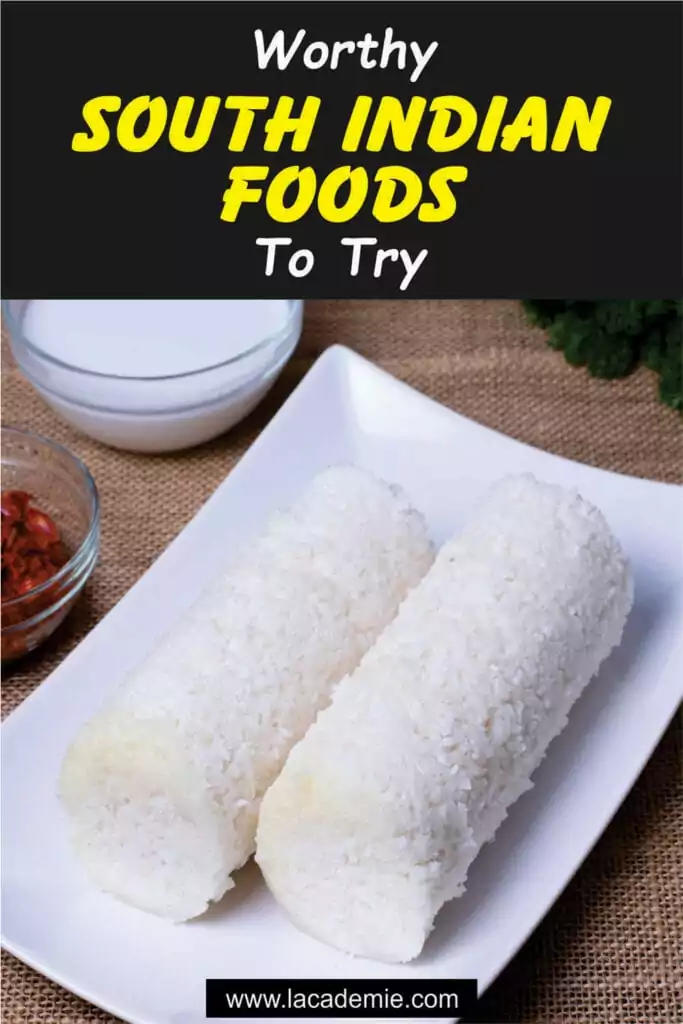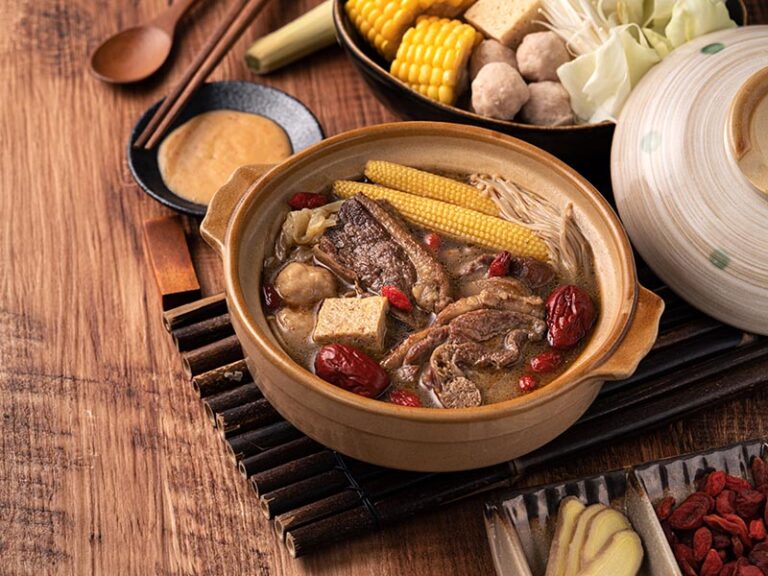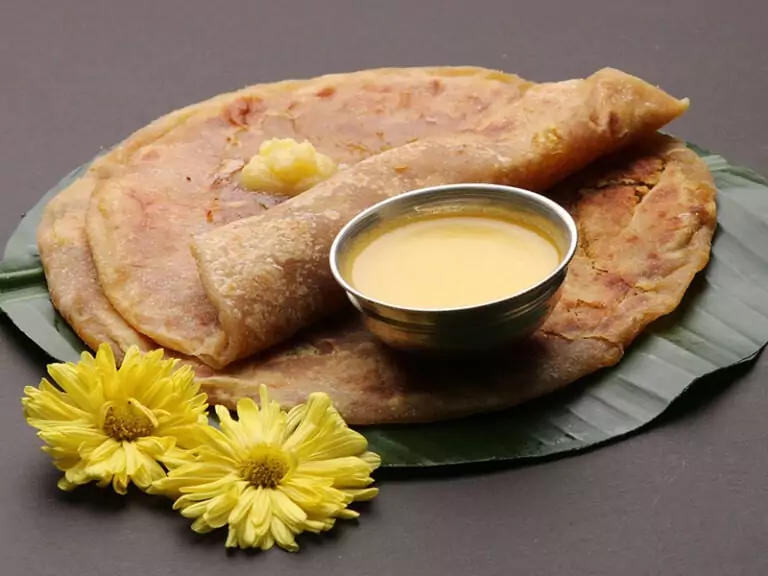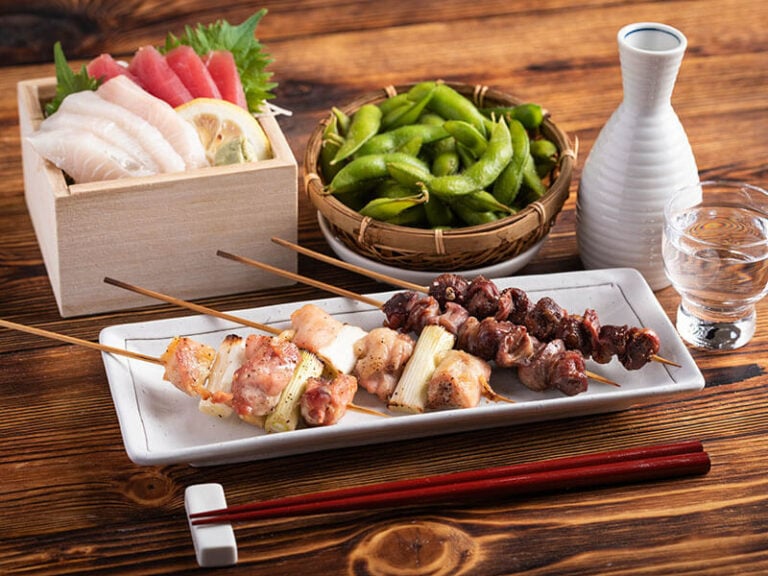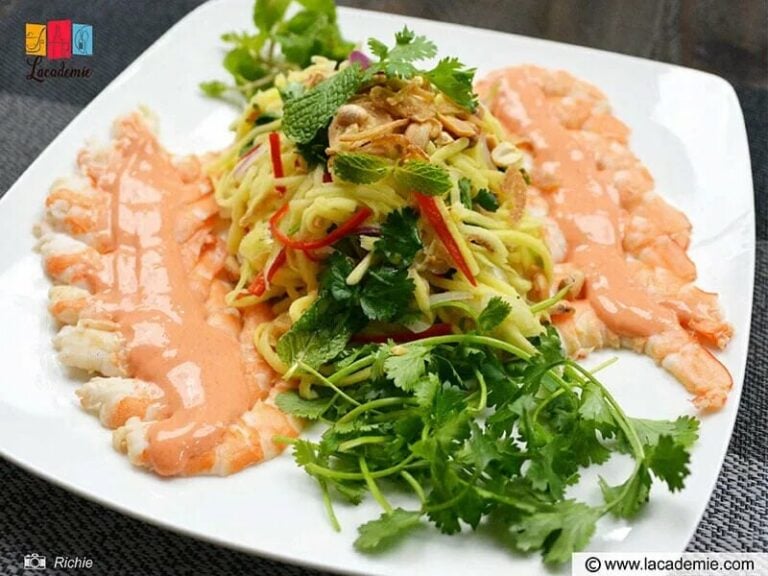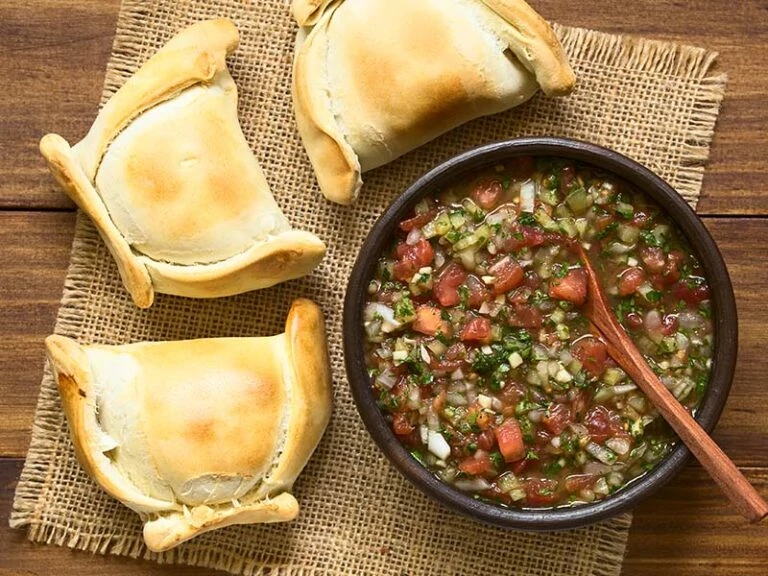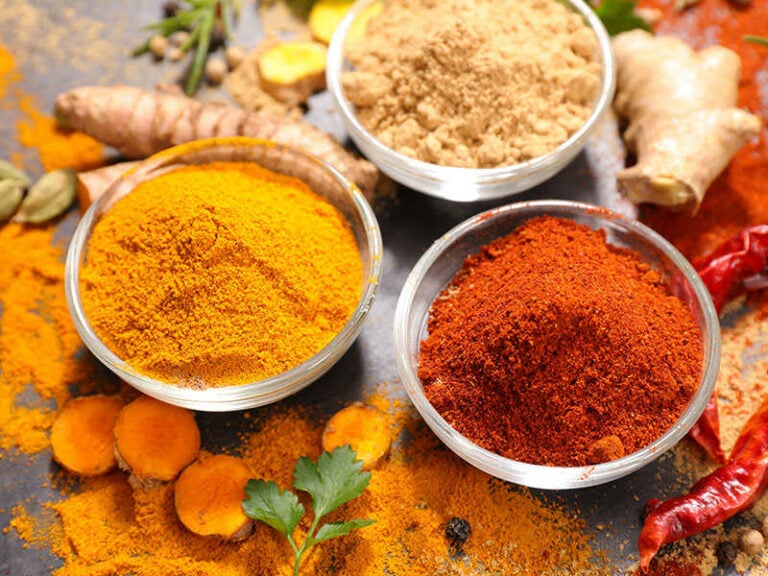South Indian foods, compared with the other culinary cultures belonging to Indian gastronomy, have various distinguishments that you cannot find elsewhere. Although this cuisine is famous for its vegetarian recipes, there are many meatier other options.
I guarantee you can opt for these Indian delicacy recommendations and enjoy a whole day traveling in South Indian regions full of palatable foods. Want some light meals, heartier treats, or desserts? You can find everything you wish for here!
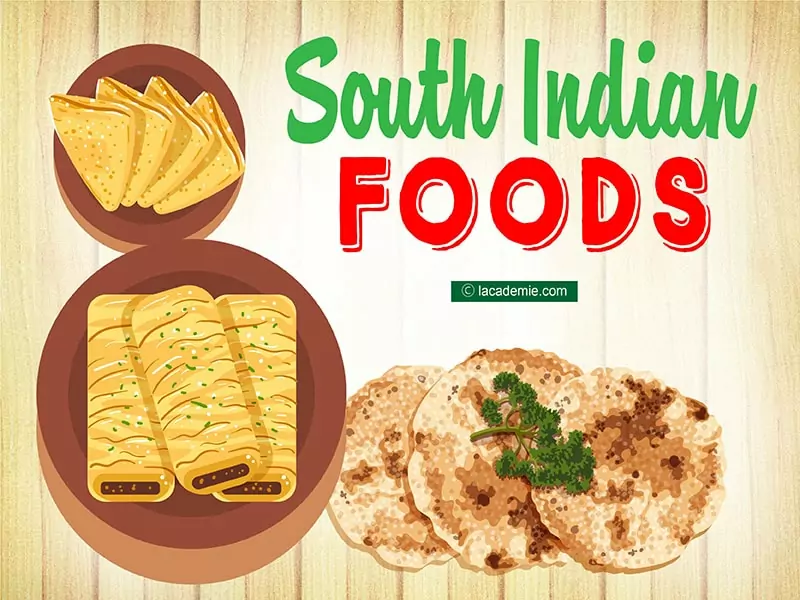
Exploring South India’s 5-State Cuisines
Indian culinary culture is extremely diverse. Today, you will learn something new about South Indian specialties.
More specifically, this cuisine represents different cooking traditions of the five southern states of India, namely Andhra Pradesh, Karnataka, Kerala, Tamil Nadu, and Telangana. Here are some highlights about these five states’ food in South India.
Andhra Cuisine
Also known as Telugu cuisine, Andhra cuisine is known for its boldly tangy flavors and spicy dishes, often featuring chilies and tamarind.
FYI, Andhra Pradesh state is the leading red chili production in this country.
Karnataka Cuisine
This culinary practice is more varied, with influences from neighboring states. Located near the coastal line, Karnataka signature dishes are particularly known for the use of seafood.
Regarding the flavor, their delicacies include both mild and spicy dishes.
Kerala Cuisine
Kerala cuisine makes extensive use of coconut in various forms, as well as an emphasis on seafood due to its extensive coastline. As a result, they have both vegetarian and non-vegetarian dishes to offer.
Plus, the cuisine also incorporates a range of spices, giving rise to flavorful and aromatic dishes.
Tamil Cuisine
Authentic Tamil dishes are from the state of Tamil Nadu. It emphasizes the use of rice and lentils, with some common names like Dosa, Idli, and Vada being popular staples.
They also use a lot of dairy products and tamarind to enhance the flavor of their delicacies.
Telangana Cuisine
The region’s dishes often feature tangy flavors and highly spicy heat with an emphasis on millet (e.g., jowar and bajra), seasonal vegetables, and meat, which are chicken, mutton, and fish being popular choices.
Tasty South India’s Starch-Based Dishes
When it comes to Indian cuisine, you should never ignore the starch bases. It’s because you’ll always need something to pair with their savory delights.
Feel excited yet? Let’s scroll down and see the most famous Indian starchy dishes I’ve prepared for you!
1. Idli / Idly (Indian Steamed Rice Cake)
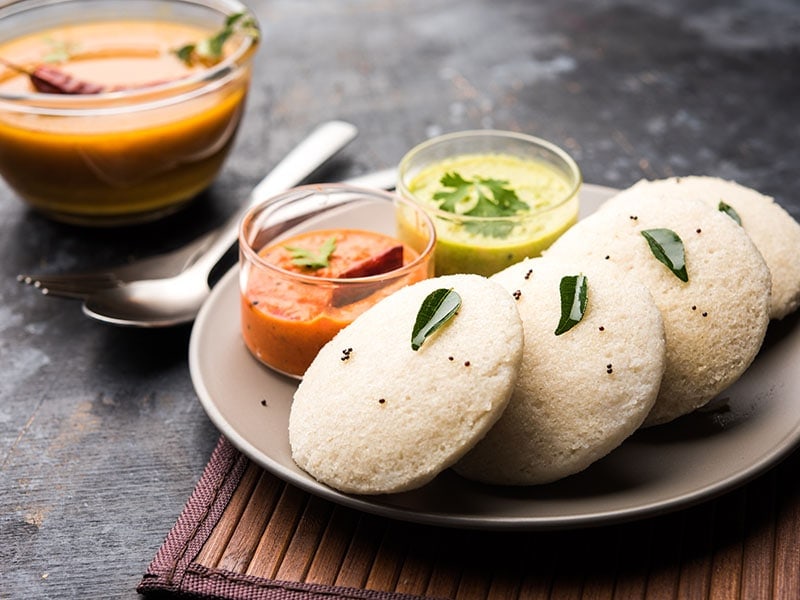
Once mentioning Idli, everyone might immediately think of a light and favorable Indian breakfast recipe that usually goes alone or with a portion of Sambar (spiced lentils stew).
Steamed, fermented black lentils and rice with a mild taste can never go wrong with something savory, like Sambar. Coconut-based Chutney is also a great way to go as the lovely richness from the typical Indian fruits in the sauce complements the rice cakes well.
The ones who first brought this delight to India in the 10th or 12th centuries were Saurashtrian textile merchants. They are now known as the Indo-Aryan ethnolinguistic Hindu Brahmin community and live mainly in the Southern regions of this country.
Another idea holds that ancient Indians created IIdli and that its precursors appeared in old documents under various names. The dish, known as “iddalige” in the earliest source from 920 CE, was made entirely of black gram and differed slightly from the present Idli.
Know where to have the best Idli in South India? Here is a suggestion.
2. Puttu / Pittu (Steamed Cylinder Rice Cake)
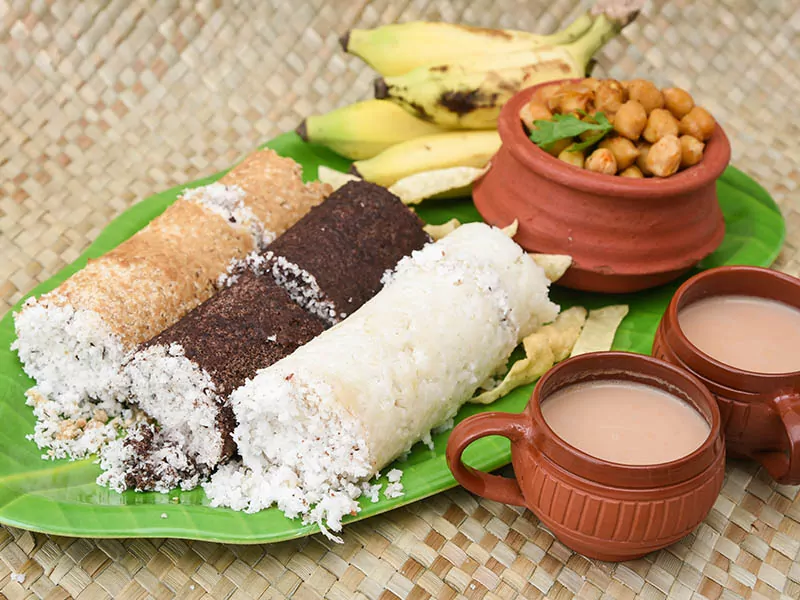
Puttu (meaning “portioned” in Malayalam/Tamil) is also a steamed rice cake; however, it’s native to Kerala, Tamil Nadu, or other Southern Indian regions. The main differences between those regional types are the prominent cylinder shapes and the additional sweet/ savory fillings.
To form a portion of Puttu/Pittu includes coarsely ground rice (or red rice flour in Sri Lanka) with condiments and some rich coconut products; Puttu is a good taste balancer.
Some most recommended delicacies to go with Puttu are Curries (chickpeas/mutton/fish) or bananas.
3. Appam (South Indian Rice Pancake)
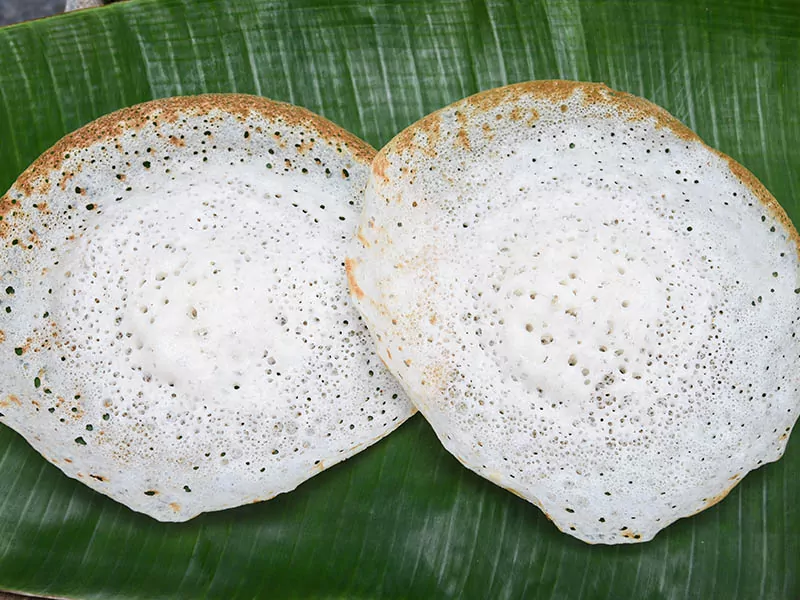
Another South India breakfast idea for you is this Appam. This dish appeared a lot in Tamil Perumpanuru (an old Tamil poem), and historians believe that it was from the ancient Tamil country as well. Nowadays, Appams are pretty prevalent around India, especially in Kerala.
Fermented rice flour and coconut milk mixture made into thin, crispy pancakes with a signature bowl-like shape is the featured image of Appams. The batter needs time to rise, so the cooks might have to prepare it ahead of time. It may take time, but the result pays off.
If you want to try this recipe as an Indian dinner delight, you can match the plain ones with mutton/chicken or chickpeas Curries like Keralan citizens. Otherwise, going for ones with eggs is also an excellent way to enjoy this delicacy.
4. Dosa (Indian Rice Crepe)
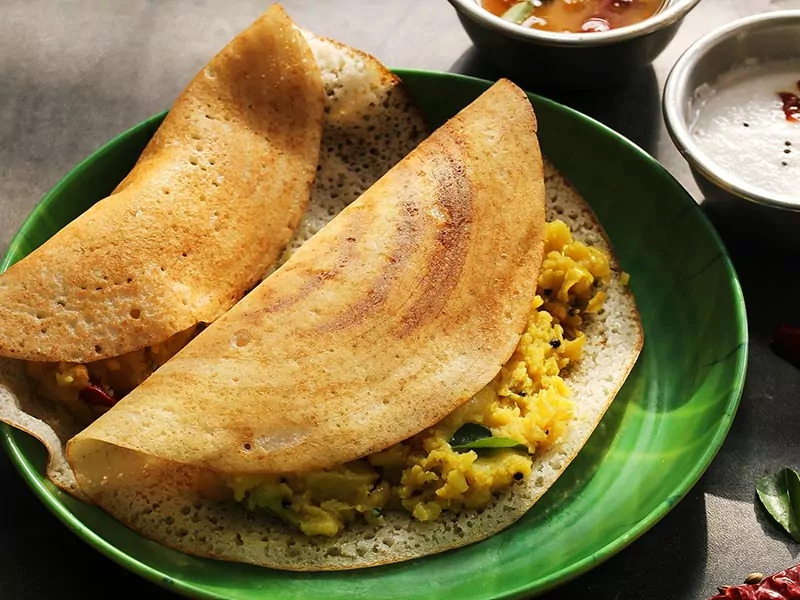
While many historians agree that South Indians developed Dosas, the proper birthplace of this treat remains a bone of debate. Whether the rice crepes are from the Tamil country or Karnataka (once known as Udupi), this dish is exquisite.
In South India, you might find it under various names such as Dosai (in the Tamil language) or Dosha (in Malayalam). These terms all allude to a kind of thin Crepes made of fermented rice and lentil batter, and the preferred sides are also Sambar and coconut Chutney.
Local people might also serve this delight with spiced mashed potato or vegetable fillings. Or else, enjoying these Dosas with Indian pickles is also a great way to go.
One of the most common Dosa in South India is Masala Dosa, which stems from Udupi town in Karnataka. The main ingredients of this treat are parboiled rice and potato. Plus, the preparation of this Masala Dosa is different based on the regions.
Let’s take a virtual trip to Southern India for a Dosa taste test.
5. Pesarattu / Cheeldo / Pesara Dosa (Mung Bean Flatbread)
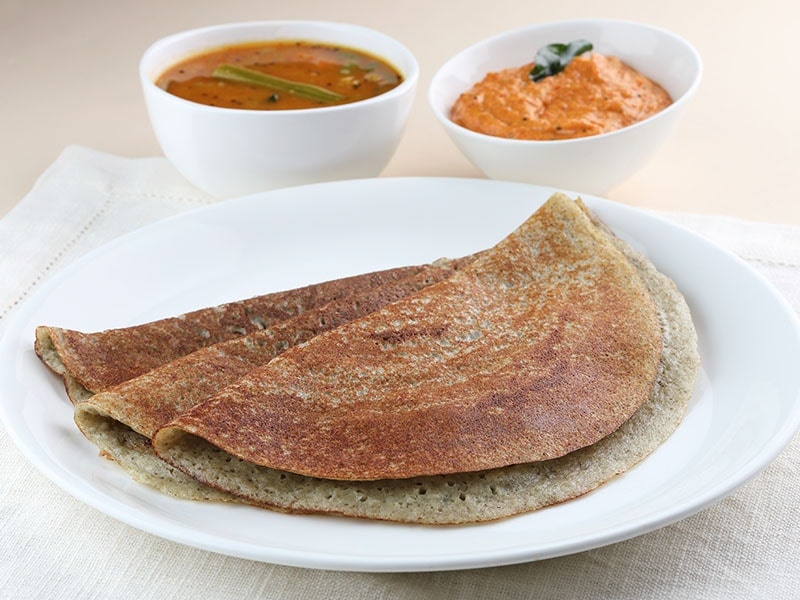
Pesarattu or Pesara Dosa is not a Crepe (like Dosa). It is actually a flatbread including moong dals (meaning green gram) soaked in water for at least 4 hours before being finely pounded into a smooth paste.
Locals then mix other fresher ingredients into the batter and pan-fry it carefully until crispy. To make the food look more attractive with a light green note, the cooks sprinkle some chopped onions or green chilies as toppings for your portion of Pesarattu.
Having its roots in Andhra Pradesh and best served on the side of Upma, an Indian breakfast treat, Dosa acts well as a first meal of the day or as a light Indian snack. Yummy!
Some other ways to enjoy this dish is to pair it with tamarind-ginger Chutney or other things based on the regional variants. However, all are great, I promise.
6. Upma (Indian Thick Porridge)
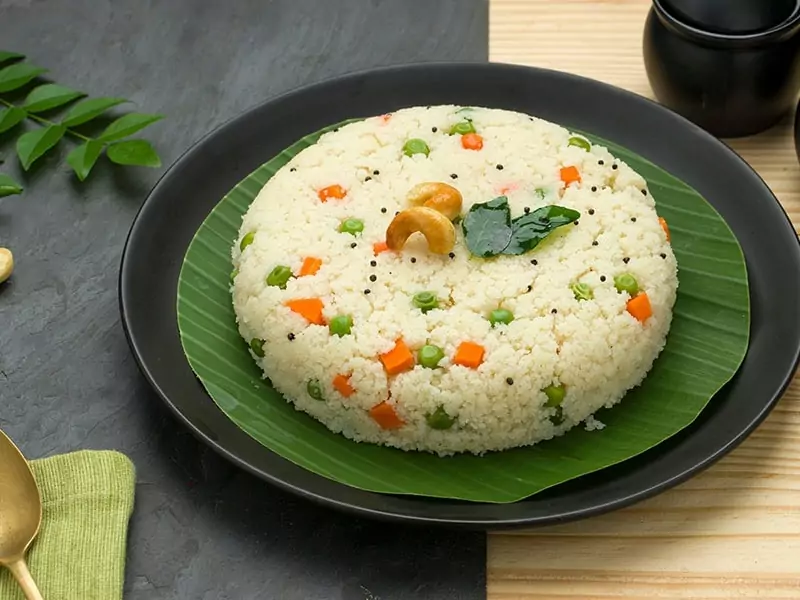
Most popular in the Southern Indian areas such as Tamil Nadu or Andhra Pradesh, Upma has been a breakfast staple there before becoming more famous nationally. You may encounter it under other names such as Uppuma (in Tamil) or Uppumavu (in Malayalam).
To make Upma, people in South India utilize many different ingredients, from rava (semolina), whole wheat, and coarse rice flour to corn or noodles.
Since the base of Upma is pretty bland on its own, local people often add other components like spices and nuts to make the whole treat more toothsome.
Besides the legendary combination of Upma and Pesarattu, this dish also goes with Kesari Bhath (an Indian sweet pudding) or Ghugni (a kind of chickpeas/peas Curry). The best Indian drinks to go with Upma should be ones with a pretty strong effect and taste.
7. Onion Uttapam (Indian Onion Topped Pancake)
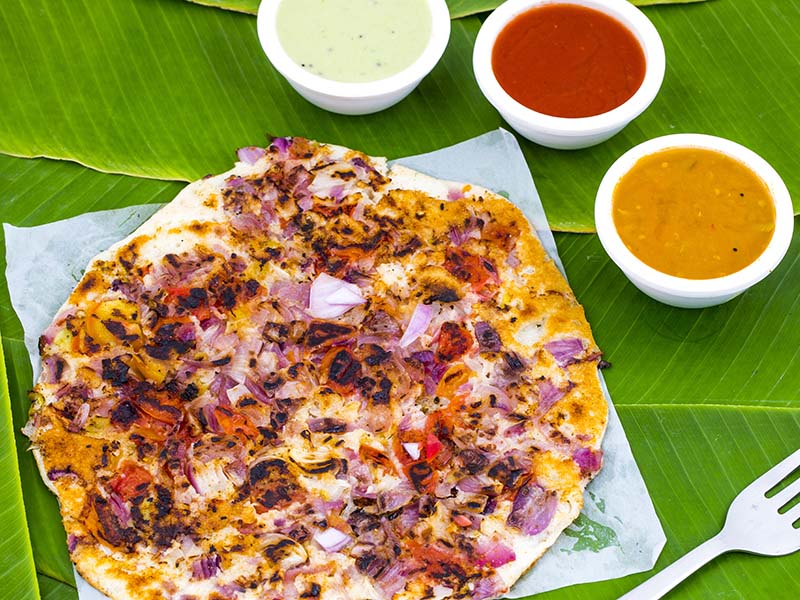
To be honest, Uttapam is a variation of Dosa, but it goes with toppings of many fresh veggies like onions, capsicums, or tomatoes. Some vendors/restaurants make this thick pancake with beets or grated coconuts, which also helps enhance the dish’s overall flavor profile.
The main ingredients for an Uttapam (or Oothappam in Kerala and Uthappam in Tamil Nadu) are urad dal (black gram) and rice. The local cooks apply the same idea with what they do with Dosa batter and let the whole rice-urad dals mixture fermented.
Because the rice and urad dal ratio in the Uttapam batter is 3:1, this dish might be a bit more starchy when eating than some other Indian-style bread or pancake recipes. About the side dishes, Sambar or Chutneys are the best choices.
You will undoubtedly want to know these four different ways to prepare Uttapam.
8. Parotta / Porotta (Indian Flaky Ribbon Pancake)
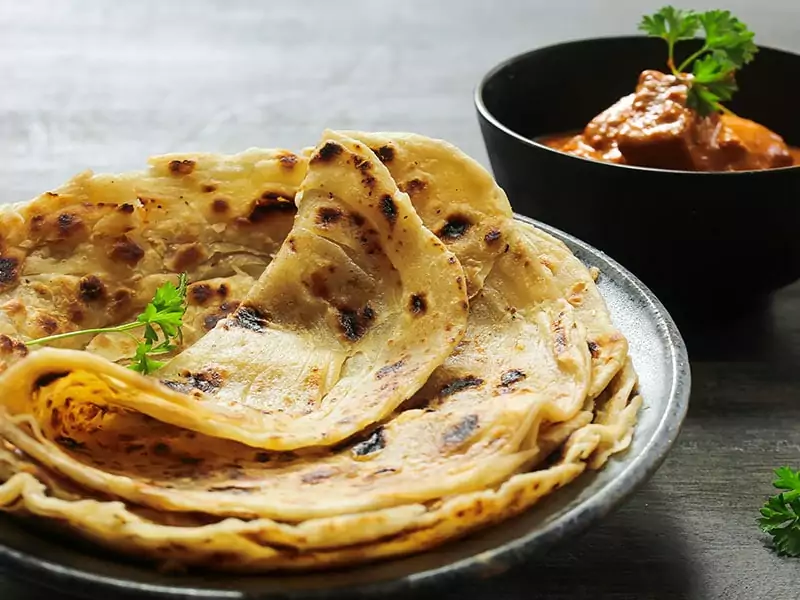
Tamil Nadu workers were the creators of Parotta or Porotta. Their initial idea for making these flaky ribbon Pancakes was to have an affordable starch dish, and they chose to use maida/aata flour (all-purpose/wholemeal wheat flour) for that.
To make the food, the local cooks only mix the flour with oil/ghee and water (according to a proper ratio) together and knead the whole dough well. The dough should be soft and stringy that can be stretched into a thin layer.
It might take time and effort for this step, but a good thing takes time. After a time, the Tamil workers moved to other Southern regions (like Kerala or Maharashtra) and brought their beloved recipes with them.
Typically, people pair it with Yogurt, Raita (Indian yogurt condiments), and savory Curries (Korma). Meaty (chicken, mutton, and beef), fish or veggies Curries all work here, so you can freely choose what you love more.
A notable fact about this delight is it’s more prevalent in the urban areas. Also, the more preferable ones are the Aata Parotta (with whole wheat flour), as the maida (all-purpose flour) variations are considered unhealthy.
9. Thengai Sadam (Coconut Rice)
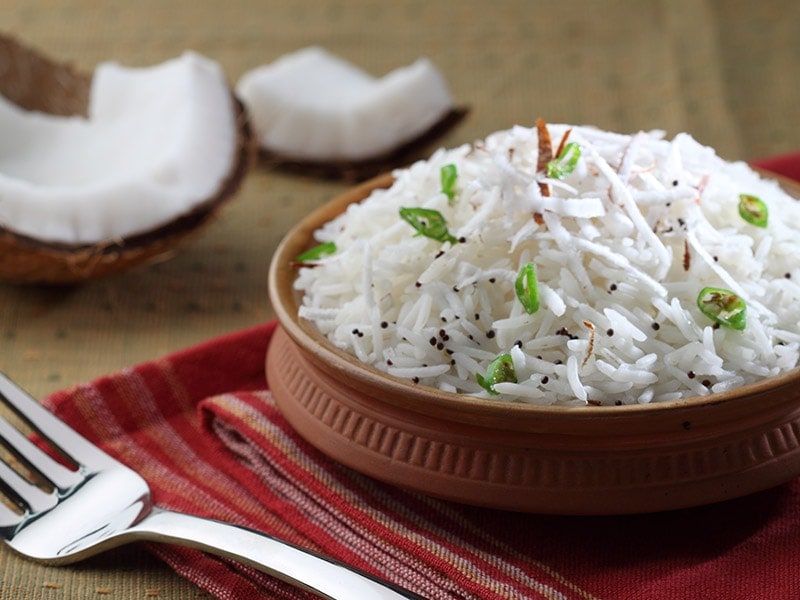
Unlike common coconut rice recipes that only have coconut soaked rice (or rice cooked with coconut flakes), South Indian Thengai Sadam also includes nuts (like almonds or cashews). This treat particularly calls for short-grain rice instead of the longer ones like basmati rice.
Generally, the local chefs need to roast every spice (curry leaves, green chilies) and nuts with melted coconut oils first. They then put the grated coconut into the pan and saute it well with other ingredients before adding the cooked rice.
Mix them well, and the coconut rice is ready to serve. The most recommended Indian side dishes to go along with Thengai Sadam are dry Curries of choice. Papad or crispy black gram flour-based dough can also work well here.
Try this foolproof coconut rice recipe for a dish that will knock your socks off.
10. Dahi Bhat / Thayir Saadam (Curd / Yogurt Rice)
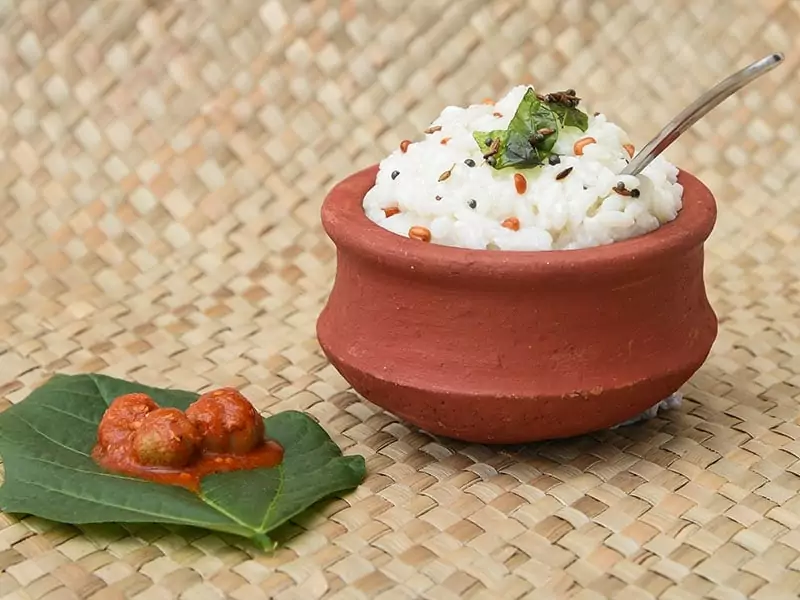
Mixed with curd or unsweetened probiotic yogurt, this Dahi Bhat might look like a dessert, but local people actually have it with pickles or as a final dish of a meal (lunch or dinner). This delight is pretty famous in South India, and people there call it by various names.
For example, it’s Perugannam in Andhra Pradesh, Thayir Saadam in Tamil Nadu, and Dahi Bhat in Maharashtra. There are 2 main variations of this dish: with and without tempered ingredients like black gram, mustard seeds, etc. Besides, each is also served differently.
While the one without tempered components goes to ordinary meals local people serve the other as Prasadam (“blessed food”) for devotees during formal or religious occasions.
Besides the fact that it’s tasty, Dahi Bhat also aids digestion and offers various health benefits.
11. Pongal (South India’s Rice Porridge)
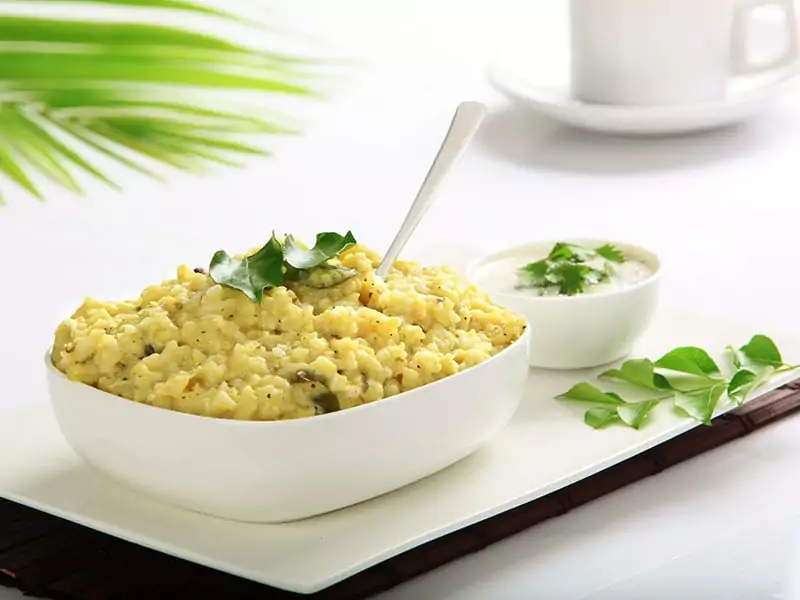
Pongal is a loved dish originating from the Tamil Nadu cuisine. The name “Pongal” is derived from the Tamil word “pongu,” which means to “boil over” or “overflow”. FYI, pongal is not only a delicious breakfast but also the name of a harvest festival in South India.
The main ingredient of Pongal includes rice, which is cooked with other ingredients, depending on pongal varieties’ recipes. Plus, there are two main varieties of Pongal: Ven Pongal and Sakkarai Pongal.
Ven Pongal, also known as Khara Pongal, is a savory version of the dish. Besides rice, another important ingredient in Ven Pongal is yellow moong dal (split mung bean).
It is also seasoned with black pepper, cumin seeds, ginger, and ghee, giving it a rich and comforting taste. Ven Pongal is often served as a breakfast dish, accompanied by coconut chutney, sambar, or tomato and onion chutney.
On the other hand, Sakkarai Pongal is a sweet version. It is prepared with jaggery, which imparts a natural sweetness. The dish is further enriched with ghee, cardamom, and sometimes nutmeg or saffron.
Overall, this one is a delicious food that is typically enjoyed during the harvest festival of Pongal, celebrated in January.
Savory Main Courses Or Sides Dishes In South India
After knowing about starchy delicacies/side dishes, move to the main courses or heartier delights you can refer to have a complete meal in Southern India. How about going for some Sambar or some Kori Gassi? Discover more now!
12. Sambar (Spiced Lentils Soup / Stew)
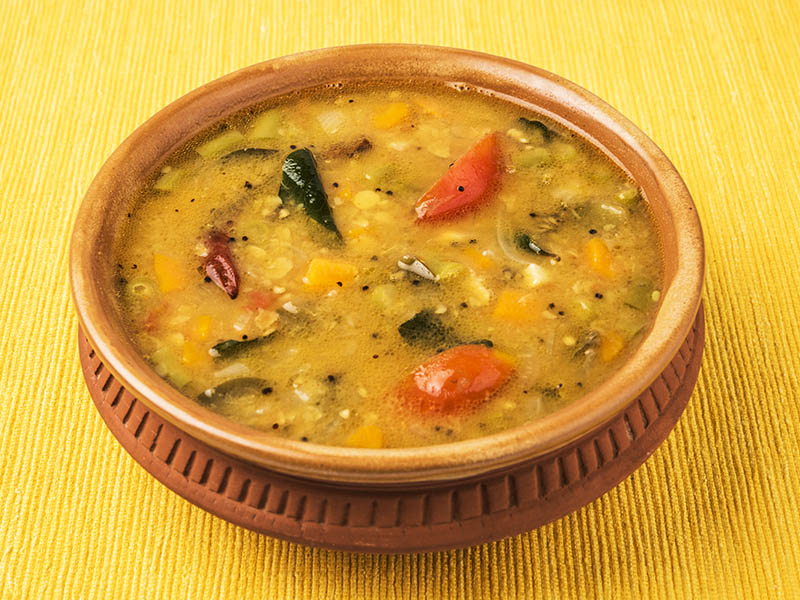
If you have never heard of this authentic Indian soup recipe before, you will remember it clearly after finishing reading this humble article. It’s because this Sambar is highly versatile and can pair with most of the pancakes/flatbreads above. How amazing!
First appearing in the 17th century at the lastest, this luscious and simple soup dish has been a staple in Indian meals since then. People there, especially Southern Indians, adore this dish for its hearty yet healthy characteristics.
On the side of lentils, other summer-y vegetables like gourds, beans, or carrots can go in this soup either. Full of flavors and nutrients from various veggies, there is no reason not to give this Sambar a go.
A visual instruction to help you prepare the best sambar with authentic flavors.
13. Rasam / Charu / Tili Saru (Spicy South Indian Soup)
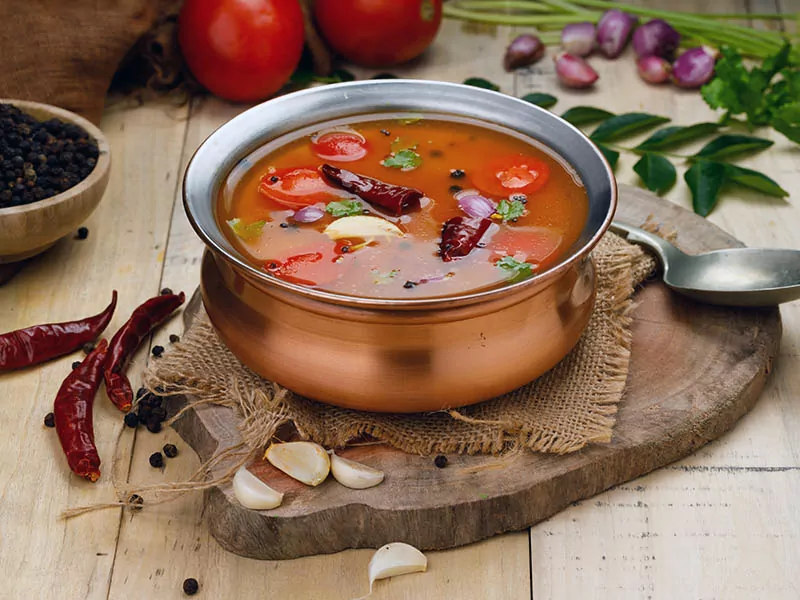
Born in Andhra Pradesh and Tamil Nadu, Rasam is now renowned around India as a spicy soup dish with luscious sweet-sour broth consisting of tamarind and kokum (a mangosteen fruit). Other things contributing to the palatableness of Rasam are tomatoes, dals, etc.
The dals are typically lentils, and the more famous kind of dals going with Rasam is toor dals (or pigeon peas). To add depth to the natural sweetness of this soup delight, the cooks use regional condiments such as amchur (dried mango powder) or ambula (sun-dried mango).
As mentioned in the name of this food, besides Rasam, Charu (in Telugu) and Tili Saru (in Kannada) are the other ways to call for this delight in South India. These names are meaningful, such as Charu meaning “essence” or “soup/juice.”
14. Palkatti Chettinadu/Chettinad (Chettinad-style Paneer Gravy)
Palkatti Chettinadu is a popular dish that hails from the Chettinad region of Tamil Nadu. This delicacy offers the vibrant flavors and rich culinary heritage of the area, making it a true representation of the region’s unique cuisine.
The main ingredients of Palkatti Chettinadu include fresh paneer, which is a type of Indian cottage cheese, and a distinctive Chettinad-style masala.
This masala is made from a blend of aromatic spices, such as fennel seeds, cinnamon, cloves, and star anise, combined with ingredients like onions, tomatoes, and garlic.
As a result, it has bold flavors, with the Chettinad masala lending a fragrant and slightly spicy taste to the dish. The paneer also brings a mild and creamy contrast to the mix, making it a delightful and well-balanced creation.
15. Chettinad Chicken Curry
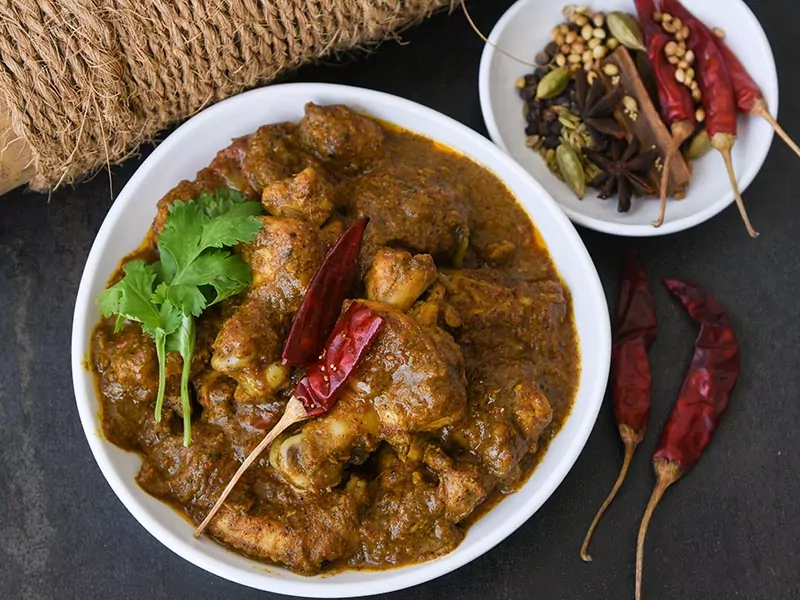
The name of this dish has introduced where it comes from, the Chettinad region of Tamil Nadu. This particular cuisine is renowned for the “deadly” spiciness, so you can also expect that signature taste from this Chettinad chicken Curry.
Looking at the ingredients of this Indian chicken delight, you can see that the cooks have to mix various spices. Some things like kalpasi (black stone flowers, for a smokey flavor), red chilies paste, and other hot condiments always appear.
To ease the robust flavors of this particularly hot dish, finding a starch base or refreshing sides is a must. I highly suggest Parathas (flaky flatbread) or steamed rice, but you can opt for your favorite dishes like Idli or Upma.
16. Kozhi Ishtu (Keralan Chicken Stew)
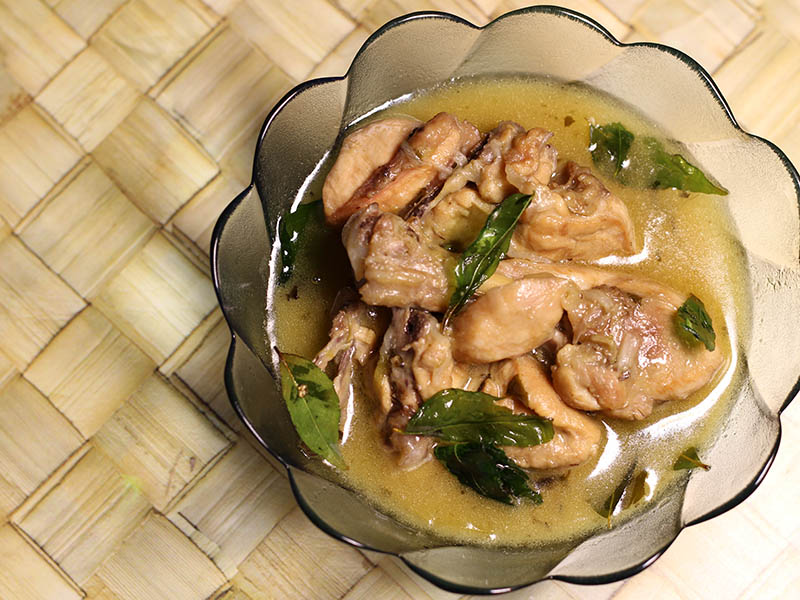
Not every Indian delicacy is spicy, and this favorable stew is solid proof of that. The dish’s term “Ishtu/Ishtoo” is quite renowned in the Northern Malabar regions. Although it would be best to describe the dish as “mild,” you can expect more than just a bland bite.
This Kozhi Ishtu might not include robustly spicy components, but the aromatic spices are never excluded. Anise, cardamom, fennel seeds, and cloves are some of the most prominent ingredients here.
The local cooks need to process all of them in thick-bottom vessels to achieve the authentic flavor of the food. They also put some vegetables in to enhance the nutrient profile of this Kozhi Ishtu so that you won’t need to worry much about the dish’s nutritions.
The richness of coconut milk makes the food go perfectly with a portion of pancakes (Appams) or rice hoppers for breakfast.
17. Chicken 65 (Spicy Deep-Fried Chicken)
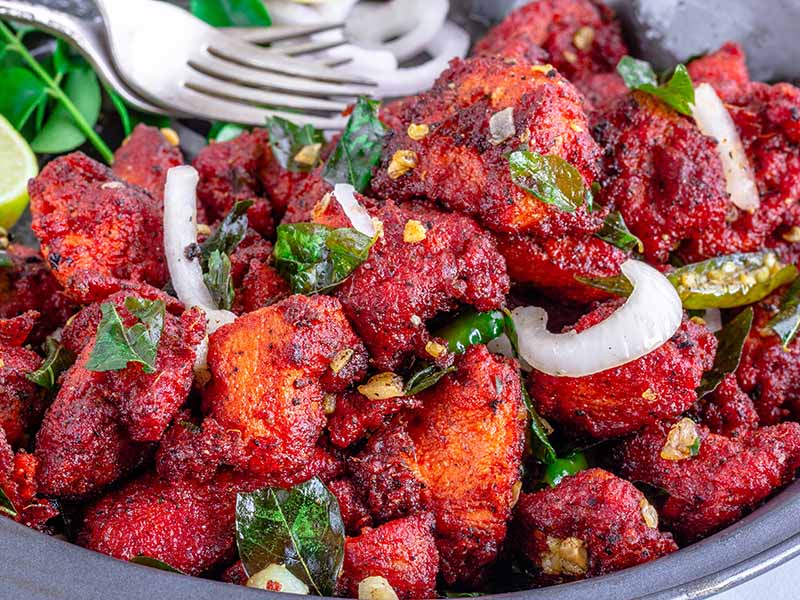
Fried chicken is an absolutely no-fail dish whenever you crave fast food. Among various chicken fry recipes, this beloved South Indian Chicken 65 is one of the best. Chicken 65 has its name from the year it was born, 1965, in a Buhari hotel in Chennai.
Although there are some other theories behind the name of this dish, the mentioned one is a bit more famous. Whether you want to have it as an Indian-inspired hors d’oeuvre or as a quick snack, it can work well and please your appetite.
The spotlight of this delight is its flavored crust with various spices (red chilies or ginger garlic paste). The crunchiness and impressive flavor punch can easily tempt you from the first bite into it.
18. Andhra Chili Chicken Curry
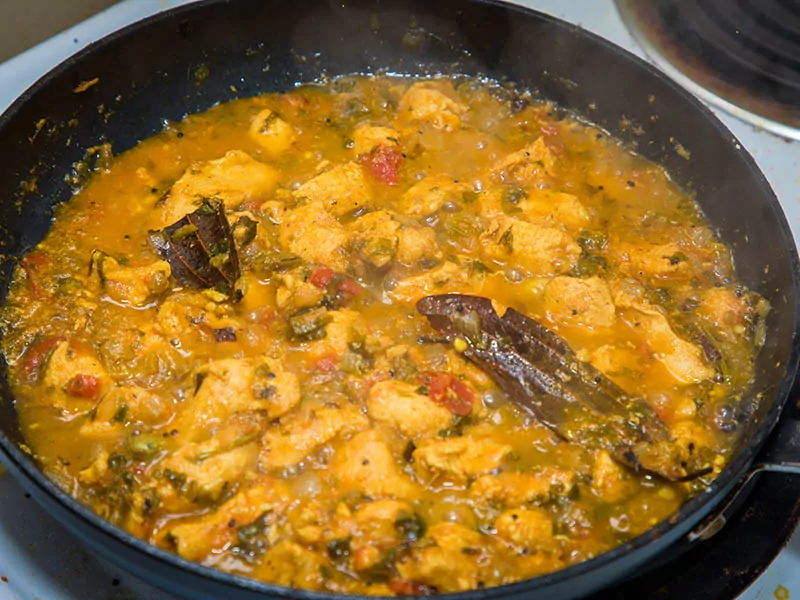
A notable fact about this Curry is that it has no relation to the typical Andhra cuisine, but its name only refers to the prominent overly spiciness featured in the Andhra foods. Therefore, be aware that this food is not for ones with a faint heart.
Instead of Andhra, Bengaluru or Bangalore is definitely where you should find this good Andhra Chili Chicken Curry. After marinating the chicken with condiments/spices overnight, the chefs need to process it carefully to preserve the nutrients from every component.
Since the whole dish has a relatively intense flavor, you should call for Parotta, rice (or cumin rice) to neutralize all the robust notes. Want it for a fascinating Indian lunch or dinner with this specialty? Feel free to do so.
Local chefs might make it into a chicken fry dish by applying the same spices used for marinating steps with this Andhra Chili Chicken Curry. Their tastes are close as their marinades are similar, but the chicken fry is more tempting to those who enjoy fried foods.
However, both variants, Curry and fry, are best when they are still hot, so you need to savor them as soon as possible after buying.
This step-by-step guide is all you need for a palatable Andhra Chili Chicken Curry.
19. Kori Gassi (Mangalorean Chicken Curry)
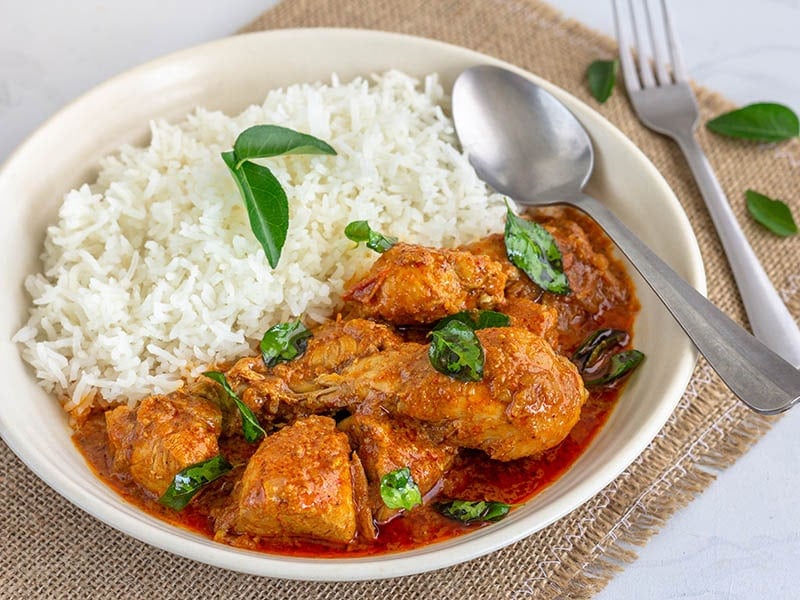
“Kori” means “chicken,” and “Gassi” means “Curry”. This Mangalorean creation has already shown you its “core” inside its name. Mangalore has a beautiful coastline with typically hot weather. The foods there are famous for the vibrant red color with a mix of many spices.
Wondering why this Kori Gassi is so spicy after the first spoonful? The secret lies on the ground, chilies added. However, you don’t need to worry about whether your dish is overly spicy. The use of coconut milk/oil and grated ones help boost the balance already.
What about the side dishes going on the side of Kori Gassi? I highly recommend rice wafers or Roti (an Indian flatbread). The combination of Kori Gassi and rice wafers is also known as Wafer Kori Roti (’chicken Roti”) even though there is no chicken in use.
20. Haleem (Paste-like Stew)
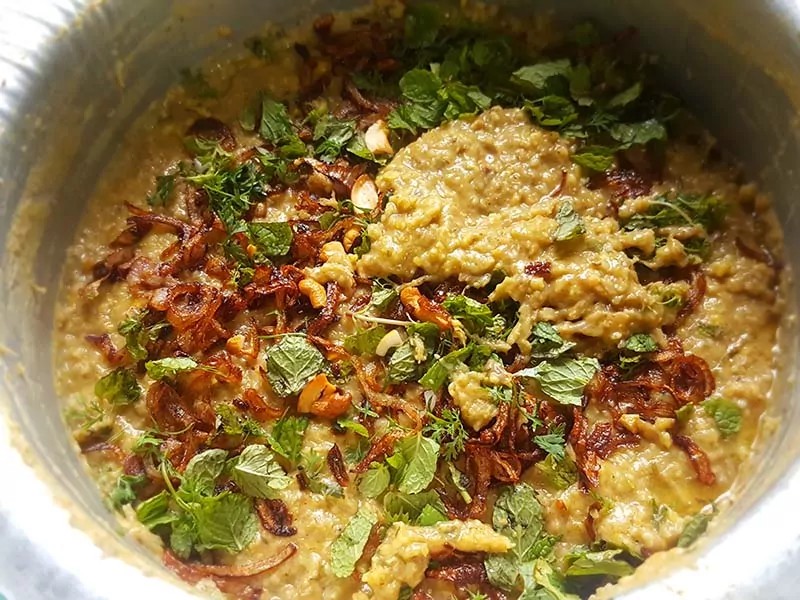
Haleem, a stewed delicacy consisting of lentils and wheat/barley, is an Arabic-originated delicacy and is well-known in South India as well as other South Asian countries.
The Hyderabad (the capital of Telangana state in Southern India) variants of Haleem have meats (chicken/mutton or else) combined, either.
The precursor of Haleem was Harees, a delight that appeared for the first time in some 10th-century documents (during the Mughal time). The historians believe that foreign migrants brought it to this country.
When preparing this dish for Islam’s Ramadan month, people in Hyderabad often cook it inside a large kettle (called cauldrons) for many hours. How impressive!
Take a closer look at how local Indians make Haleem on the street through this!
21. Meen Kulambu/ Kuzhambu (Fish In Tamarind Curry)
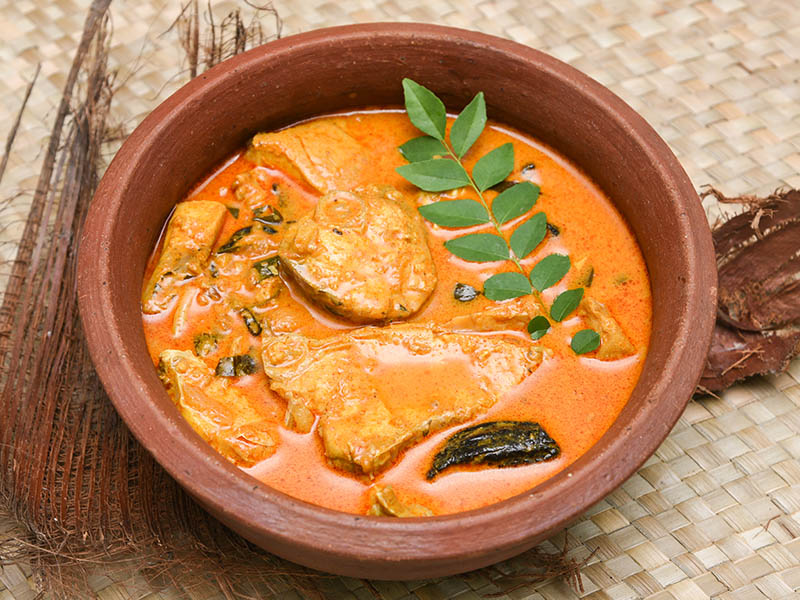
As there are a lot of meat-based dishes so far, it would be best if I talk about a fish-utilizing recipe in this list of Indian specialties now. Tamarind acts as the base for the gravy of this delicacy on the side of the spice blend of fenugreek and coriander.
Locals love creating this Meen Kulambu from ladyfish (or kizhangan/Indian whiting) in an earthen pot (called chatties) in Kerala. The cooking process in the earthen pot lends an exquisite earthiness and rusticity to the whole dish.
This fish Curry pairs best with a portion of steaming hot rice, Roti, or Dosa, so you should taste them together at least once in your life. One tip to make the fish meat even more full of flavor is to let the whole batch rest for a while. Trust me; the result can easily blow your mind.
22. Beef Ularthiyathu (Kerala Beef Fry)
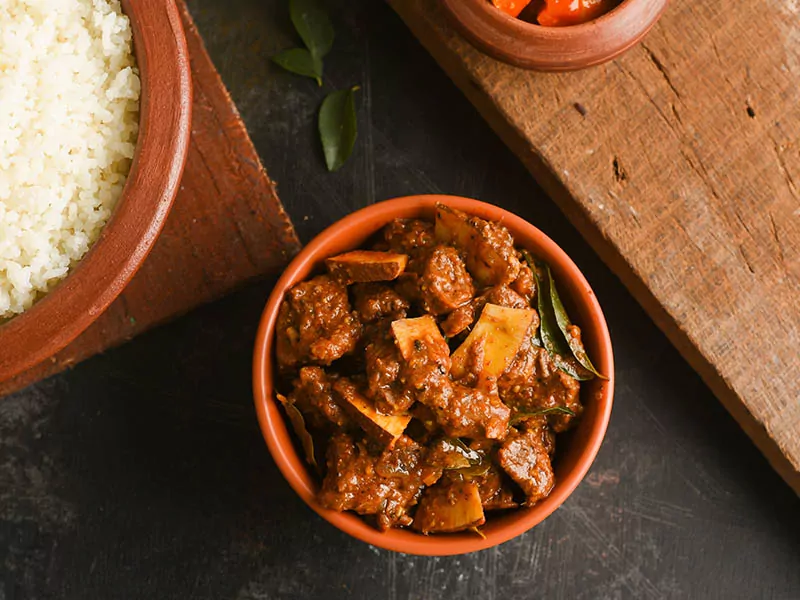
In case you want to find Indian recipes compatible with the instant pot, this beef Ularthiyathu or Kerala beef fry is an ideal nominee for that. Appearing for the first time in 52 CE, this Indian beef dish has always been a favorite of the Keralan people.
Typically, the local chefs cook the meticulously spiced beef chunks slowly with tons of spices like meat Masala (typical Indian spice mix), flavoring powder to make this Keralan beef fry. Because of that, using a pressure cooker or instant pot can help reduce the time for cooking.
The finished dish doesn’t contain much gravy, so finding a way to enjoy it is essential. I usually have it with banana Fritters or Parottas. They are the perfect combo, so don’t hesitate to order them together.
23. Pork Vindaloo (Pork Curry)
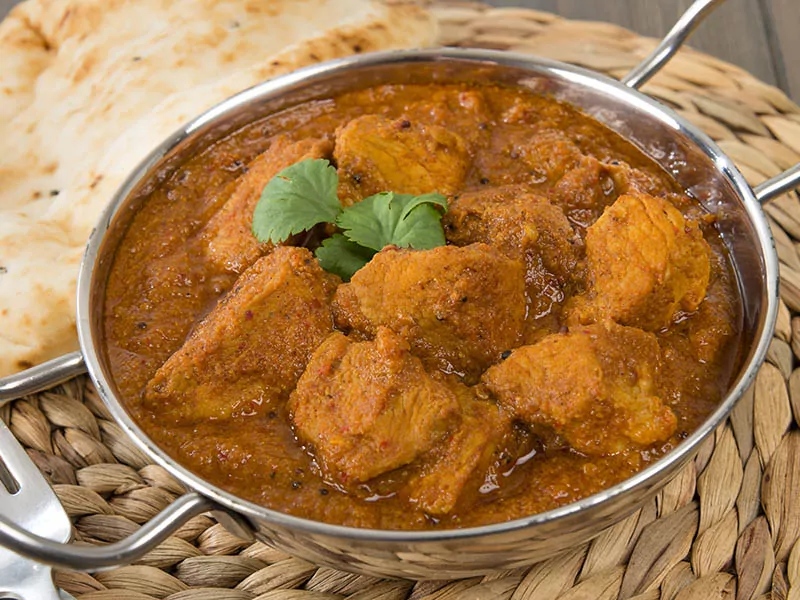
Another well-liked curry is Vindaloo with its best match, pork. Portuguese delicacies, or to be more specific, Carne De Vinha D’alhos (marinated pork), have a strong influence on the local Indian dish and that is how a fiery Vindaloo was born.
Traditionally, the Carne De Vinha D’alhos calls for the red wine and garlic to soak the pork, but the Indians changed the alcoholic ingredients into palm vinegar.
Moreover, Pork Vindaloo is a traditional food in Goan cuisine, so there will be some minor changes in ingredients. But overall, locals will put every ingredient, from the meat to aromatic spices and veggies, in the same pot and cook for a long time.
In the end, the sellers will serve your order with plain rice. This combination is reasonable as the whole thing will be milder when going together.
Sometimes, you might need this Vindaloo going with other kinds of protein. The most prevalent substitution is chicken, yet you can also see it as an Indian shrimp-using delight. But, shrimp is easy to rubbery, so the cooks need to be careful.
Making Pork Vindaloo is effortless once you know this enticing recipe.
24. Poriyal / Thoran (Stir-Fried Vegetables)
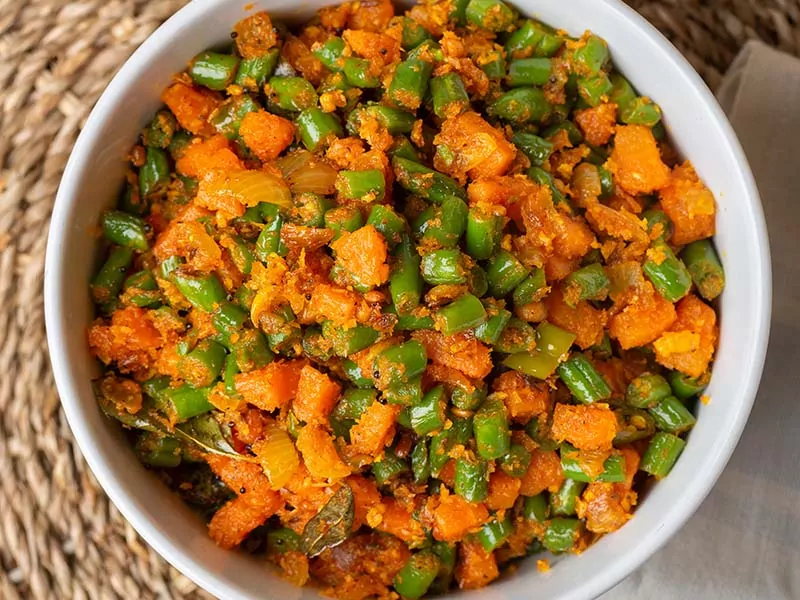
In case you are feeling a bit greasy with all the savory and meaty suggestions above, it is time to go for a veggies-loaded treat.
This Poriyal recipe doesn’t use a single kind of veggies (potatoes, beans, lentils, carrots, etc.); the cooks are free to add their own twists to this easy, simple, stir-fried dish.
What makes this Poriyal different from the other cuisines’ stir-fried vegetables is the use of spices. To make this humble dish match better with Parottas, rice, or other starch bases in a full meal, grated coconuts, curry leaves, and mustard are utilized to boost the aroma/taste.
Exquisite Southern Indian Desserts And Snacks
It’s important to have something light and to refresh to devour after a meal or to renew your taste buds (with a piece of light treat). If you are now finding something like that to enjoy while having your trip in South India, take a look at my suggestions below.
25. Mysore Paak / Pak (Indian Mysore Ghee-Based Sweet)
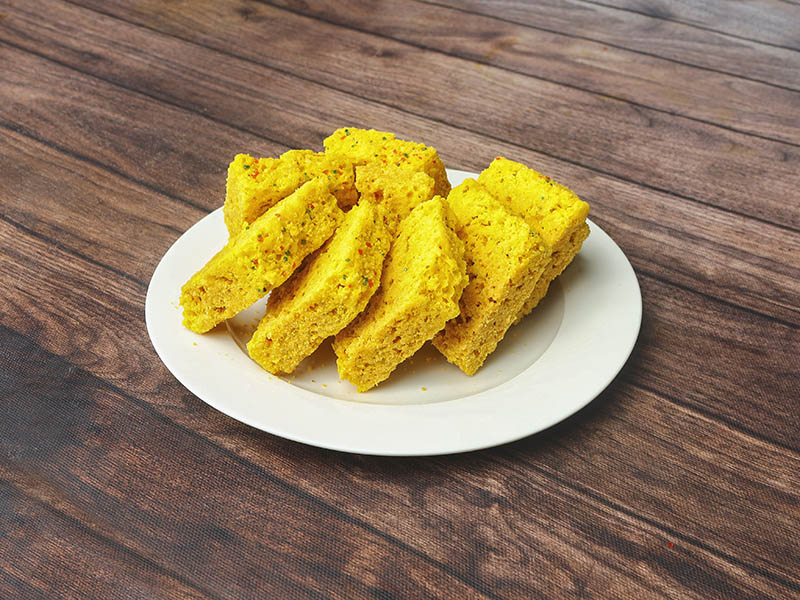
The term “Paak/Pak” in this food’s name means mixture, and it has that name since the chefs need to make it from a mixture of ghee (clarified butter), gram flour, and sugar. About “Mysore,” it is about the birthplace of the treat, which is the Mysore city of Karnataka state.
Kakasura Madappa, a chef for Krishna Raja Wadiyar IV, coincidentally created this dish while trying to make a new dessert for the King. He was in luck that time, and when the King asked him about the Indian sweet delight’s name, Mysore Paak came out suddenly.
Nowadays, the modern variations of Mysore Pak still encase the goodness from the original version and also offer lovely notes of floral essences and spices (like cardamom). Local people enjoy having dessert for weddings and baby showers.
Each cook will have their own secret for Mysore Pak and in case you want to experience the authentic Madappa recipe, find Guru Sweets stores in Devaraja Market. The owner is the descendant of the creator of this dish.
26. Payasam (Indian Wet Rice Pudding)
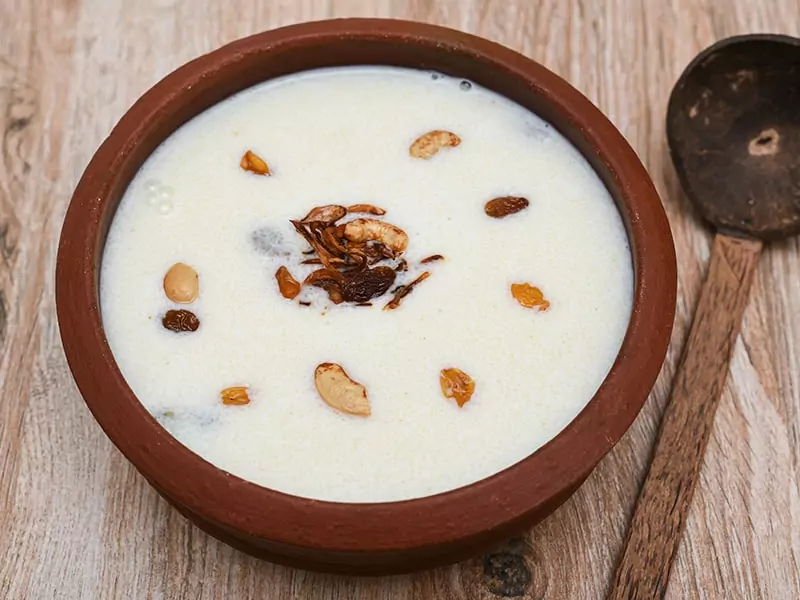
Unlike the general concept of rice Pudding with a thick consistency, Payasam has much more liquidity. This South Indian sweet dish has been there, in local people’s daily diets, for more than 2000 years, and its name was derived from the term “payas” (meaning ” milk”).
Once enjoying a portion of this Pudding, its appealing sweetness matching the pleasant additional tastes from coconuts, nuts, and dried fruits can easily please your taste buds. The sweetener for Payasam is jaggery so that the overall taste won’t be overly sweet.
Although rice is the main ingredient for Payasam, locals sometimes change it into sweet corn, tapioca, bulgur wheat, or vermicelli. Another fact about this luscious Payasam is it’s a temple food and is often prepared for Hindu devotees.
In addition, don’t mistake Payasam and Kheer though both use milk as the primary ingredient. Payasam tends to be slightly thinner in consistency compared to Kheer, which is generally thicker and creamier.
27. Ada Pradhaman / Payasam (Festive Sweet Porridge)
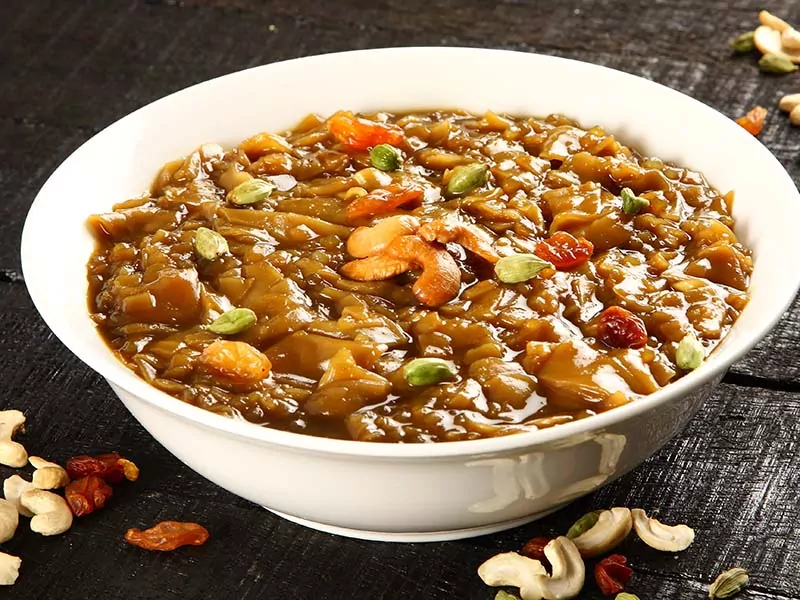
Let’s talk about a variation of the previously mentioned Payasam; this Ada Pradhaman is a staple for various South Indian festivals and special occasions. For instance, locals make it for a Keralan harvest festival (Onam) or an offering to the Gods in Hindu temples.
Notably, the word “Ada” refers to a kind of Keralan steamed rice parcel wrapped inside a rice-made flour. However, the “ada” here is the flattened ground rice.
To form a delicious portion of Ada Pradhaman, the cooks will use jaggery and coconut milk instead of dairy products or regular sugar.
With its piney-smelling, fruity, and slight astringent flavors, cardamom accentuates the deliciousness of this dessert pretty well.
The locals make this sweet porridge inside a bell-shaped cooking vessel, and they always melt the jaggery before processing to remove unwanted impurities.
28. Medu Vada (Savory Fried Snacks)
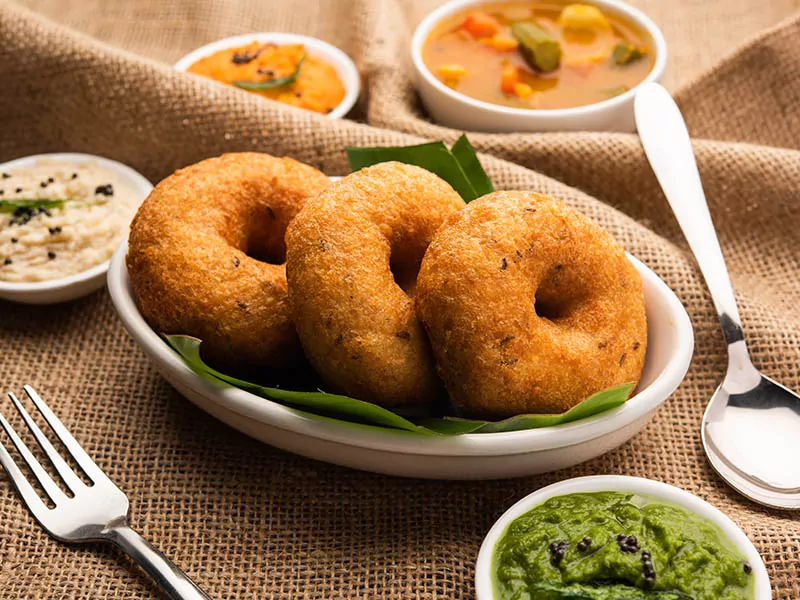
Besides the fact that people may call it by other names in India (such as Wadeh, Bada, or Vadai), there are also various ways to describe it in English, like Fritters, Donuts, or Cutlets. You can also find it as a Northern Indian dish called Bhalla, and they’re pretty the same.
About the origins of this food, historians believe it first appeared during 100 BCE or 300 CE, and Tamil people were the ones who created it. The main ingredients for a portion of Vada are mainly legumes (like chickpeas, lentil, or pigeon peas).
More importantly, the spices are essential since no one wants a bland deep-fried treat. Therefore, curry leaves, cumin seeds, and onions with other condiments like black pepper grains have to be included in the recipe.
Crispy exterior with loads of flavors encased, Medu Vada seems like a must-have food to try whenever you visit India.
Look at these attractive Vadas! Do they make you want to take a bite already?
29. Murukku (Rose Cookies)
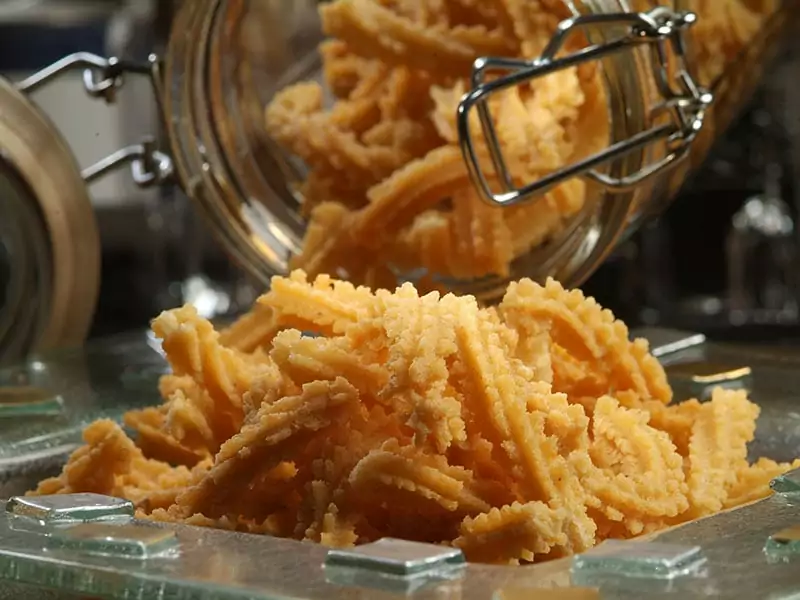
In love with something more crunchy for your snack time? How about giving this Muruku a go? The motherland of Murukku is in Tamil Nadu and people in this area are the ones who spread it to other South Indian regions like Andhra Pradesh, Karnataka, and Kerala.
While its name, “Murukku,” means “twisted” in the Tamil/Malayalam languages, the Indian-originated snack is called “murukulu/ janthikalu” in Andhra Pradesh. The main ingredients for Murukku are rice and urad dal flour, along with spices like cumin seeds.
Although there is no rose essence or extract here, the food has the name Rose Cookies in English because of its flower-like shape. Looking at its appearance, you might think of Jalebi; however, they are not the same thing as the Murukku doesn’t go with flavored sugar syrup.
30. Thattai / Chekkalu (Deep-Fried Rice Flour Snack)
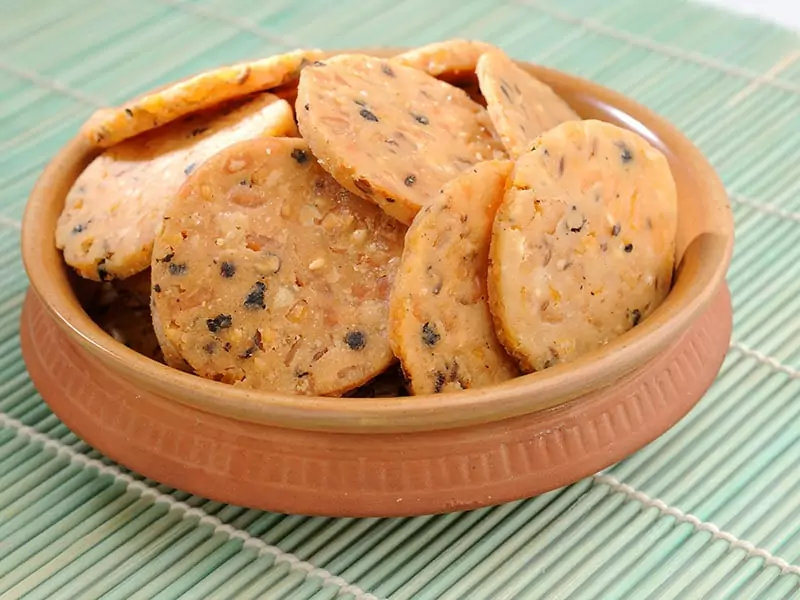
During the Sri Krishna Jayanthi/Janmashtami (or Krishna’s birthday celebration), you can quickly meet Thattai. This humble yet tasty snack, which has only rice flour, chana dals (split chickpeas), urad dals (black grams), etc., acts as a festive staple in many South India areas.
People in different regions might call it by other names, such as “Chekkalu” in Andhra Pradesh or “Nippattu” in Karnataka. But, they all refer to this crunchy, deep-fried snack.
There are two main variations of this food (salty and sweet), and local people also use Thattai to form a fascinating sandwich rather than just used it as a snack.
The fillings for the exciting dish can be Chutneys, some root veggies (carrots, beetroots), or else. Sounds great!
Savor Other Treats In South India
Do the above suggestions satisfy you? In case you still want to refer to other delicious Indian recipes, I have your back. Just spend some more minutes and take a look at them.
31. Patrode (Colocasia Leaves-based Snack)
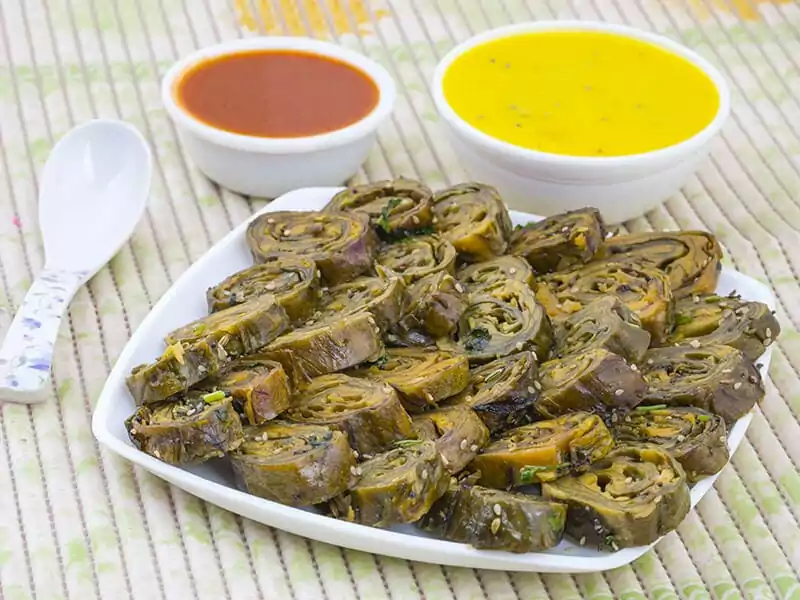
Patrode, also known as Patra or Patrodo in various regions of South India, is a delightful and flavorful dish.
This delicacy is primarily made from colocasia leaves, which are smeared with a spiced batter made of rice flour (or gram flour), lentils, and a blend of spices such as tamarind, jaggery, and red chili powder.
The leaves are then rolled, steamed, and sliced into bite-sized pieces before being shallow fried or tempered with mustard seeds and curry leaves.
The unique combination of ingredients in Patrode gives it a distinct flavor profile, with a perfect balance of tangy, sweet, and spicy notes. With the steaming process, it results in a soft and moist interior, while the shallow frying or tempering adds a slight crispiness to the outer layer.
When preparing Patrode, it’s essential to properly cook the colocasia leaves, as they contain irritating calcium oxalate crystals. Therefore, steam the leaves for an adequate duration, as this will help break down these crystals and make them safe for consumption.
32. Hyderabadi Dum Biryani (Hyderabad’s Mixed Rice)
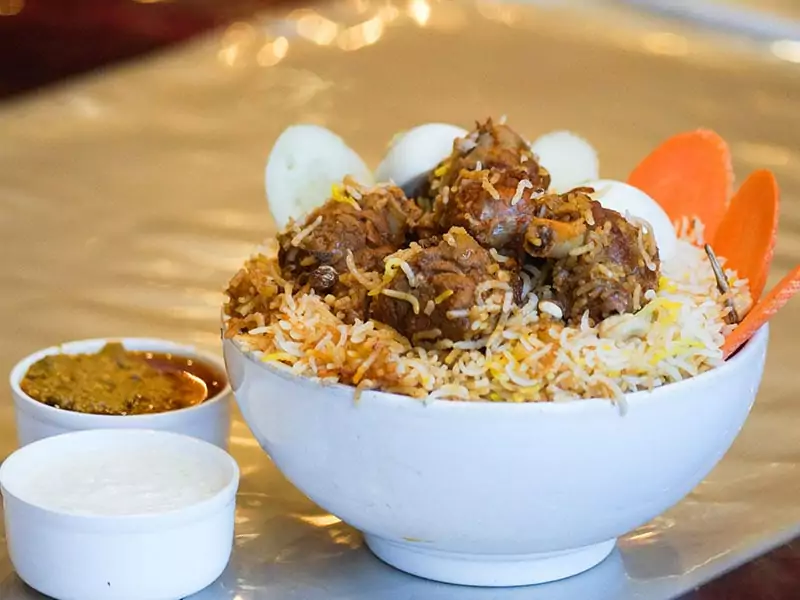
This delicacy is a must-try for the traditionalists at heart. The Hyderabadi cuisine is renowned for the expertly use of rice, wheat, and meat combined with plenty of herbs/spices, and that’s what this Dum Biryani is all about.
To be honest, the actual roots of this Dum Biryani are pretty unclear. The only sure thing about it is it’s flourished under the influences of Hyderabadi gastronomy. The standard ingredients for a Biryani batch are usually basmati rice, meat (chicken, goat, or mutton), and spices.
On the side of some common spices like bay leaves or cinnamon, an authentic Hyderabadi Biryani needs shahi jeera (caraway), papaya paste, and javitri (mace flower). All make the dish totally distinguished.
Baghaar-E-Baingan (Hyderabad eggplant Curry), Dahi (or yogurt), Chutney, or some simple Indian fresh salads are the great sides for this filling rice dish. Believe me, the rejuvenation from salads or richness from Dahi works perfectly here.
On the way to try the best Hyderabadi Dum Biryani, let’s see the review.
33. Hyderabadi Kheema Biryani (Hyderabad’s Minced Meat Mixed Rice)
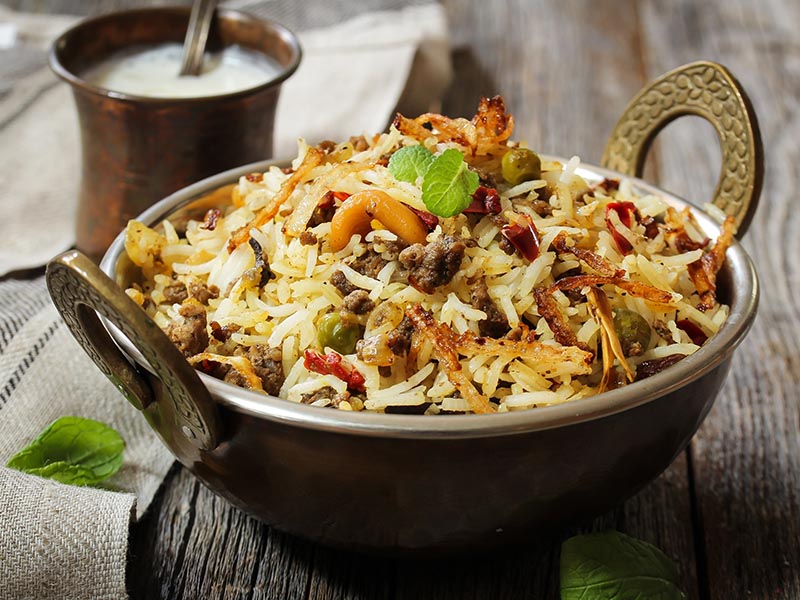
Pretty similar to the previous Dum Biryani, this recipe also comes from Hyderabad with meat as the main protein. Furthermore, the local chefs also cook this dish in dum like the previous Dum Biryani. Yet, the Keema Biryani calls for minced meat rather than meat cubes.
If you are questioning the typical yellowish hue of the food, it is from the saffron-soaked milk. To enhance the tempting fragrance of the recipe, the cooks also put in the floral essence (from rose or screwpine flower extract).
Every time I dig into this dish, the topped caramelized onions never fail to impress me with their lovely sulfuric, earthy scents. The accompaniments of Keema Biryani are varied, so you can simply ask for the recommendations of the sellers or choose something you like.
34. Kothu Parotta (Curried Shredded Bread)
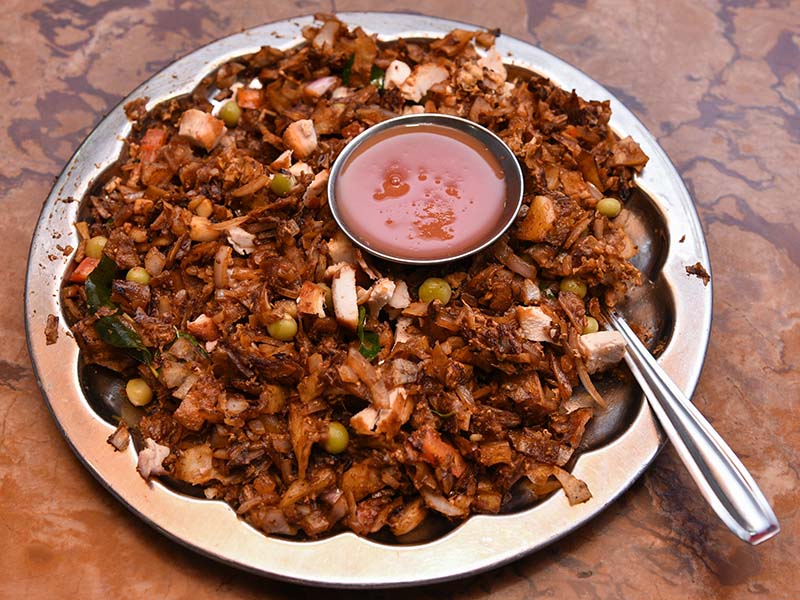
Do you wonder how Indian people deal with leftover bread? If yes, Kothu Parotta is the most common way to use leftover bread (especially with leftover Parottas) in Kerala. It’s so tasty that the local citizens also enjoy it as a quick dinner with Raita there.
As “Kothu” means “chopped/shredded” in the Indian language, so you can somehow guess that the cooks have to chop or shred all the ingredients. They”ll then cook all of them on a flat pan and add some other things like eggs or meats (chicken/mutton) with spices to taste.
The sauce that pairs with this intriguing Indian street dish is often tomato-based and flavored like a spicy Korma (an Indian Curry).
The mix might seem lumpy at first, but it will blend well afterward. Trust me, Kothu Parotta tastes better when it’s cold, and you should try it at least once.
Kothu Parotta and the way local people assemble it on the streets.
35. Unniyappam / Unni Appam (Small Sweet Fritters)
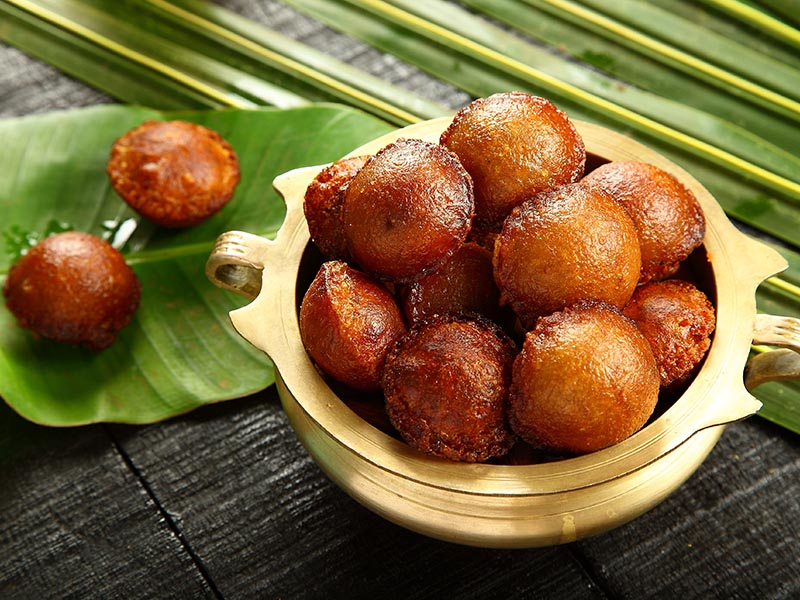
Compared to other traditional recipes above, this Unniyappam (or Unni Appam) is much “younger”. The name, Unniyappam, literally means “small rice cake,” and local people typically make it from bananas, roasted sesame seeds, rice, cardamom, etc.
Since the early 21st century, jackfruit-based variants have become more prevalent. The idea is to make the modern Unniyappam in the same manner as the original ones, so the cooks also form the mixture/batter into balls before frying them with oil.
Unniyappam can also be a prasad (blessed food offered to Hindu gods) during religious occasions. Once having the first bite into the fried rice cake ball, you can feel the crispiness on the food’s exterior and the mellow taste of banana inside.
FAQs
This section will provide you with other valuable insights and information about the various aspects of this diverse cuisine.
Have The Mood For Some Southern Indian Delights? Try These!
Typical Southern Indian dishes are full of aroma and local people tend to encase various flavors inside their recipes.
However, to experience and know deeply about a cuisine, there is no better way than to use your taste buds. Give yourself a chance to try all of my ideas above to know more about this favorable gastronomy. I’m sure you’ll feel satisfied.
If you have other recommendations for must-try South Indian delights, please leave a note/comment below. Don’t forget to share my article with your loved ones, I’m highly appreciative of your contribution.
